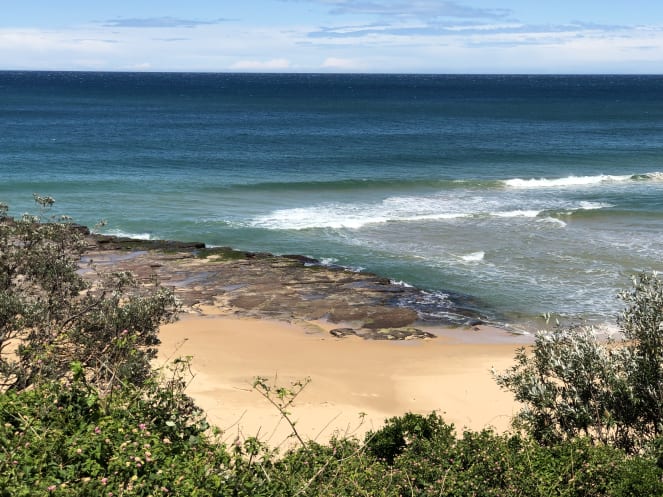Last month I wrote about how to spot a rip current – the main hazard on our beaches – and mentioned that there are different types of rips, which can make rip spotting tricky. So, what are the different types?
The most common are channelised rips that flow offshore through deeper channels between shallow sandbars. They can be anywhere from five to 50m wide and flow offshore as far as the waves are breaking and a little bit beyond.
They can stay in the same place for days or weeks and are the easiest to spot because they look like dark gaps between areas of whitewater and also carve out pronounced ‘rip bowls’ along the shoreline. They tend to flow fastest several hours either side of low tide and because they can occur on beautiful sunny days when the waves are small (and lots of people are at the beach) they are associated with most rescues and drownings. When they occur they tend to be spread along the beach, about 150m or so apart.
Boundary rips also flow through deeper channels and occur next to headlands, rock platforms or physical structures like groynes and jetties and they also look like dark gaps. They occur because when waves approach the beach at an angle, a longshore current is created that flows along the beach, hits the boundary and is deflected offshore. Most of our beaches have them at either end and they tend to be almost permanent features and will flow a bit further offshore. It’s a good reason to avoid swimming next to headlands and rocks.
Then there’s flash rips, which are the most poorly understood type of rip. They don’t sit in deep channels and don’t look like dark gaps. They form suddenly when a large set of waves, or just a few big waves, have broken, which causes the water level to rise and then force water offshore. They usually form off the back of sandbars and look like turbulent whitewater mixed with sand clouds heading offshore. They don’t last long, maybe a minute or so, and then disappear, but can form anywhere along the beach.
They are very hard to spot from the shoreline and tend to happen more on days when the waves are a bit messy. The best thing is to be aware that they exist and take care if you are standing on a sandbar and pay attention to conditions when big waves are breaking.
Regardless of the type of rip, if you get caught in one, the best advice (in my opinion) is to just float, conserve your energy and signal for help (raise/wave your arm) from any lifeguards, lifesavers or surfers who are nearby.
Have a question? Email rbrander@unsw.edu.au






